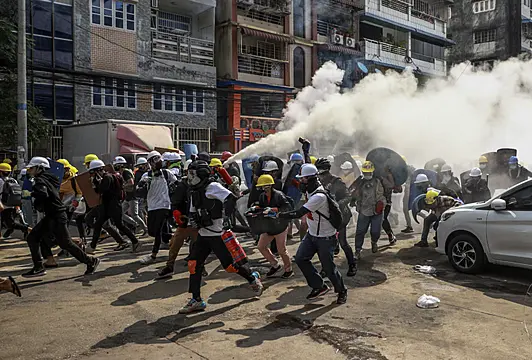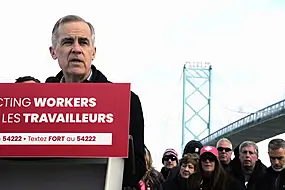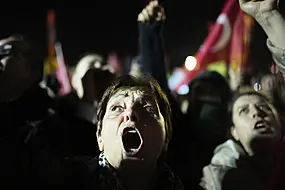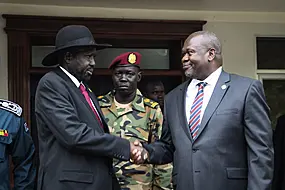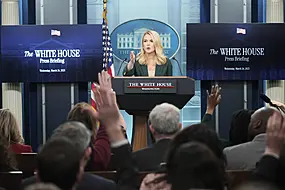Security forces in Myanmar dramatically escalated their crackdown on demonstrations against last month’s coup, killing at least 34 protesters in several cities on Wednesday, according to accounts on social media and local news reports.
This is the highest daily death toll since the February 1 takeover, exceeding the 18 that the UN Human Rights Office said were killed on Sunday, and could galvanise the international community, which has responded fitfully thus far to the violence.
Videos from Wednesday also showed security forces firing catapults at demonstrators, chasing them down and in one instance beating an ambulance crew.
The toll could be higher, with the Democratic Voice of Burma, an independent television and online news service, tallying 38 deaths.

Demonstrators have regularly flooded the streets of cities across the country since the military seized power and ousted the elected government of leader Aung San Suu Kyi.
Their numbers have remained high even as security forces have repeatedly fired tear gas, rubber bullets and live rounds to disperse the crowds, and arrested protesters en masse.
The intensifying standoff is familiar in the country with a long history of peaceful resistance to military rule, and brutal crackdowns.
The coup reversed years of slow progress towards democracy in the Southeast Asian nation after five decades of military rule.
Wednesday’s death toll was compiled by an unnamed data analyst, who also collected information where he could on the victims’ names, ages, hometowns, and where and how they were killed.

The Associated Press was unable to independently confirm most of the reported deaths, but several square with online postings.
The data analyst, who is in Yangon, the country’s biggest city, said he collected the information to honour those who were killed for their heroic resistance.
According to his list, the highest number of deaths were in Yangon, where the total was 18.
In the central city of Monywa, where huge crowds have turned out, eight deaths were reported.
Two deaths each were reported in Salin, a town in Magwe region, and in Mandalay, the country’s second-biggest city.
Mawlamyine, in the country’s southeast, and Myingyan and Kalay, both in central Myanmar, each recorded a single death.
As part of the crackdown, security forces have also arrested hundreds of people at protests, including journalists.

On Saturday, at least eight journalists, including Thein Zaw of The Associated Press, were detained.
A video shows he had moved out of the way as police charged down a street at protesters, but was then seized by officers, who handcuffed him and held him briefly in a chokehold before marching him away.
He has been charged with violating a public safety law that could see him imprisoned for up to three years.
The escalation of the crackdown has led to increased diplomatic efforts to resolve Myanmar’s political crisis, but there appear to be few viable options.
It is not yet clear if Wednesday’s soaring death toll could change the dynamic.
The UN Security Council is expected to hold a closed meeting on the situation on Friday, council diplomats said.
They added that the United Kingdom had requested the meeting.
Still, any kind of co-ordinated action at the United Nations will be difficult as two permanent members of the Security Council, China and Russia, would almost certainly veto it.
Some countries have imposed or are considering imposing their own sanctions.
